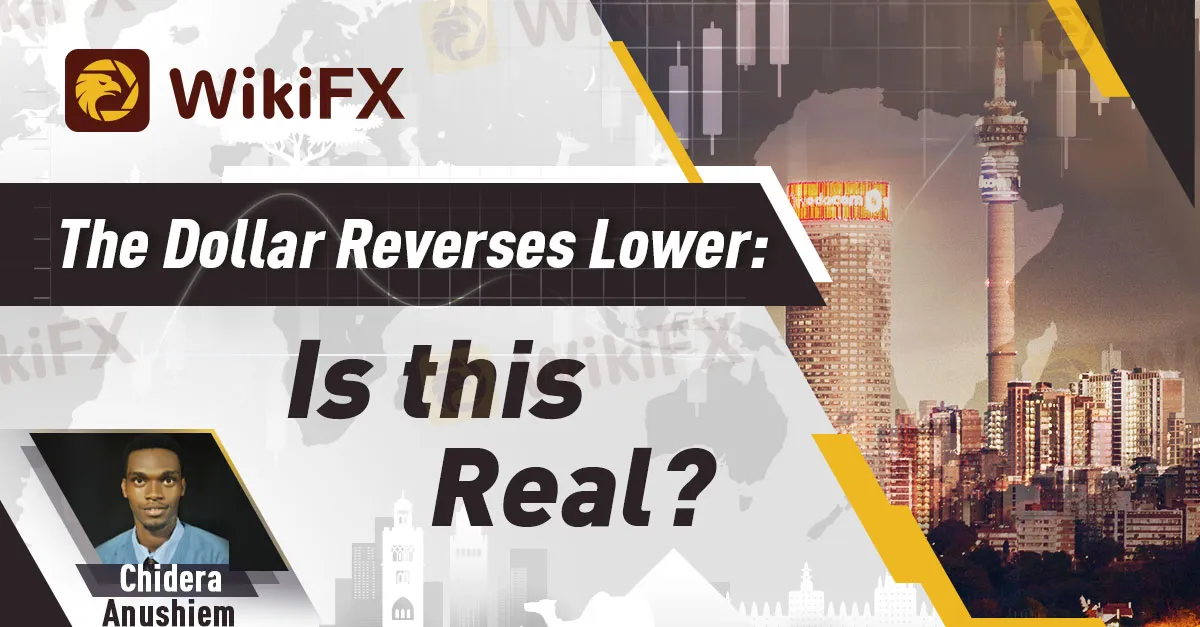简体中文
繁體中文
English
Pусский
日本語
ภาษาไทย
Tiếng Việt
Bahasa Indonesia
Español
हिन्दी
Filippiiniläinen
Français
Deutsch
Português
Türkçe
한국어
العربية
The Dollar Reverses Lower: Is this Real?
Abstract:The dollar’s bounce extended further than we expected, helped by an aggressively hawkish view of the Fed, which has seen the market price in more than one hike before the end of next year.

The dollars bounce extended further than we expected, helped by an aggressively hawkish view of the Fed, which has seen the market price in more than one hike before the end of next year.
The dollars rally into early July left the technical indicators stretched, and we note that near-term trend reversals recently have occurred around the end of the month or US jobs report.
Despite the first employment report that beat expectations in three months, US interest rates softened. In fact, the implied yield of the December 2022 Eurodollar futures contract fell four basis points. The contract traced out what appears to be a key reversal by making new lows before rallying and closing above the previous high (in price). The two-year note yield, which doubled in June, slipped lower for the fifth session in the past six. The 10-year yield fell every day last week for a cumulative decline of 10 to approach 1.40%, the lower end of where it has traded over the past four months.
The new week begins off slowly with the US holiday on Monday. Given that the individual forecasts of Federal Reserve officials were not discussed at last months FOMC meeting, and Chair Powell played them down, it ought not to be surprising if the minutes were not as hawkish as the dots. Still, while some “buy the rumor sell the fact” type of trading of the dollar was seen after the employment data, the market will want to see follow-through before becoming convinced that the month-long dollar rally is over.

Dollar Index
The Dollar Index rose to a new high since early April ahead of the jobs report, reaching almost 92.75. It sold off and closed near its lows, around 91.20. A potential key reversal was traced out. A break of 92.00 favors a near-term top being in place, and a move below 91.50 would be convincing. The momentum indicators are over-extended but are still pointing higher. As scar tissue shows, even with technical indicators seeming near extremes, prices can continue to rise, but the reversal pattern and weak close is the ideal set-up to mark the end of the month-long rally.
Euro
The common currency bounced off the push below $1.1810 after the employment data but did not take out the previous sessions high (~$1.1885). It snapped a four-day slide. A move above $1.19 would help stabilize the tone. The late June high near $1.1975 needs to be overcome to boost confidence that a meaningful low is in place. The momentum indicators are oversold territory, but if $1.1800 is given, there is little on the charts before $1.1700, which corresponds to the March low and the (38.2%) retracement of the rally since the pandemic low in March 2020 (~$1.0635).
Disclaimer:
The views in this article only represent the author's personal views, and do not constitute investment advice on this platform. This platform does not guarantee the accuracy, completeness and timeliness of the information in the article, and will not be liable for any loss caused by the use of or reliance on the information in the article.
Read more

Trading Psychology – 4 Wise Quotes From The Legendary Mark Douglas
In the world of trading, few books have had the impact of Mark Douglas’ big hit Trading in the Zone. Written almost two decades ago, the book has become a must-read for traders looking to elevate their game to legendary status. While there is so much wisdom to be found in the book, we’ve compiled 5 of the best quotes about trading psychology that every trader should read.

EUR/USD Forecast: New lows ahead of the weekend? ECB, covid and technical all point lower.
Optimism has been weighing on the safe-haven dollar – but not against the euro. The common currency's failure to recover is a sign of weakness that could be followed with falls to fresh lows once the mood sours again – and there are reasons to expect that to happen sooner rather than later.

EURJPY WEEKLY FORECAST. Price Likely To Rise Above 131.000.
The price of EURJPY has been on a steady rise ever since it made a low of 128.808. Other currencies collapsed against the Japanese Yen two weeks ago.

AUD Is Weak Under All-rounded Pressure
A rise in the wake of a fall was seen by DXY last week ascribed to the uncertain time of delisting caused by the Federal Reserve (Fed). However, the reason for the rally of DXY last Friday is the vigorous growth of personal consumption expenditures (PCE) released by the U.S. Bureau of Economic Analysis (BEA).
WikiFX Broker
Latest News
Elderly Trader Loses RM2.1M in WhatsApp Forex Scam
Spotware Unveils cTrader Store, Global Marketplace for Algo Creators
Gigamax Scam: Tracking Key Suspects in RM7 Million Crypto Fraud
WikiFX Review: Is IQ Option trustworthy?
CFI Partners with MI Cape Town, Cricket Team
Doo Financial Expands Reach with Indonesian Regulatory Licenses
5 Questions to Ask Yourself Before Taking a Trade
Quadcode Markets: Trustworthy or Risky?
Avoid Fake Websites of CPT Markets
Webull Canada Expands Options Trading to TFSAs and RRSPs
Currency Calculator


